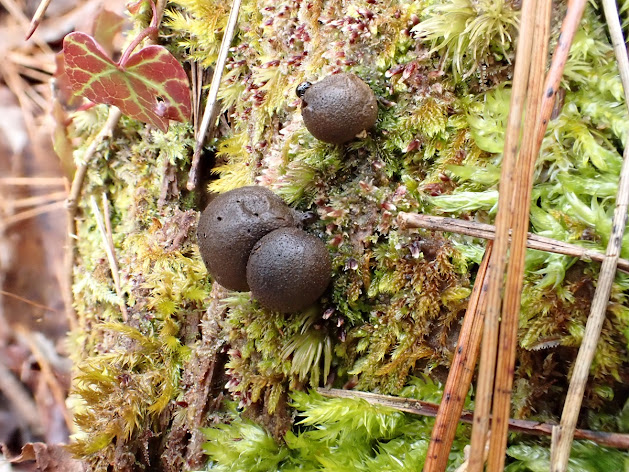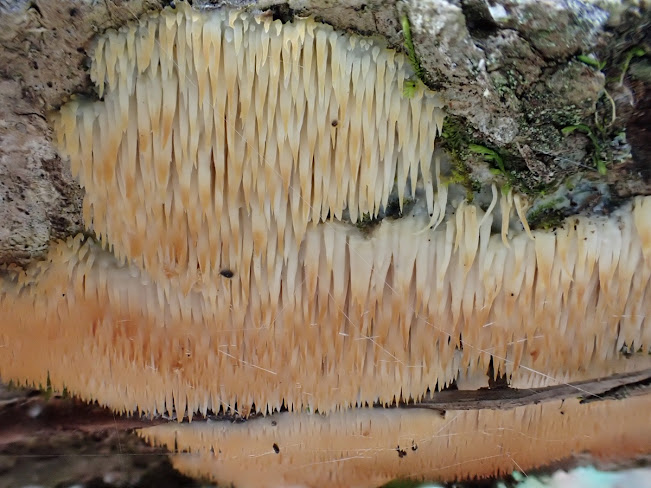My first observation of slime mold and mushrooms right after the New Year
This is my first observation of slime mold and mushrooms right after the New Year.
Best wishes for 2024!
As you know well, these are mature fruiting bodies of wolf's milk, the slime mold. Grey spores are spreading out from a small central pore.
These are also mature wolf's milk that have occurred on a rotten fallen tree covered with moss. You can see a small beetle on the upper part of the wolf's milk. It may be eating this. Looking carefully, you would notice pinholes on the fruiting bodies. This hole might be due to insects.
It looks like Myoga ginger, a kind of condiments. But what is in the photo is actually very small, about 2mm in length. It was growing on the same rotten tree as the photo above.
I have already found the same thing last year and written about them on another blog.
At that time I checked up this with Google Lens and found out that it was a kind of moss, Cephalozia otaruensis. What looks like Myoga ginger is the perianth. I think it is equivalent to the petals of a dicotyledonous plant.
I've written about this mushroom called Asian beauty on another blog last year. Many pin-like tissues have elongated downward from the back side of dead trees.
It reminded me of a kenzan used for flower arranging. The kenzan is a metal object consisting of many upward-pointing pins set on a flat base that is used to hold flowers in place. We use a kenzan with their pins upward, though.
Earthstars are still energetic without withering or rotting. Perhaps the mycelium of this ectomycorrhizal fungi is thoroughly connected to fine roots of the tree. If I would dig here a little around June, I could be able to find Mamedango. It is the very young mushroom of the earthstar. It is often said to be delicious, although I have not yet eaten. This canned food is sold in Thailand, and it is also available online in Japan.
Although the cap part of the mushroom has gone, this is a brain puffball or skull-shaped puffball filled with a lot of spores. It's like a soft serve ice cream cone. It was filled with spores down to the bottom of " ice cream cone". Although it's been a few months since this mushrooms appeared, but in the very early stage before spore formation, it is white and its cap part looks like the surface of the brain. This is the origin of the Japanese name, Nou-take. Nou means a brain and take means a mushroom. That young mushroom can be edible if you slice it thinly and saute it in a frying pan.
All the photos were taken on January 6th this year.










Comments
Post a Comment